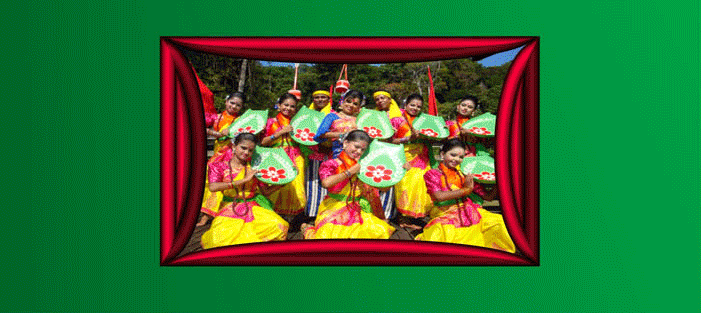

In ancient history of the Indian sub-continent, the Bangladesh was not in a shape as it is now. Previously, it was called Bengal or ‘Bongodesh’. Bangladesh is considered to be a riverine country criss-crossed by many rivers with unending natural beauty. We have the largest mangrove forest like ‘Sundarban’ and Cox’s Bazar the longest sea beach in the world. Bangladesh is well-known for its well preserved culture. The country owes the legacy of its rich cultural heritage to its early generations who carried it along from time immemorial. Dance in Bangladesh falls into three categories, such as: classic, folk and modern. Dance in Bangladesh is predominantly folk-based. It has its own distinct patterns, which evolved from the people’s traditional customs, briefs and observances. Bangladeshi folk-dances are very much a reflection of the life style of its people. Such folk songs also revolve round several other themes, including love themes. Most prevalent of folk songs and music traditions include Bhatiali, Baul, Marfati, Murshidi, and Bhawaiya. Lyricists like Lalon Shah, Hason Raja, Kangal Harinath, Romesh Shill, Abbas Uddin, and many unknown anonymous lyricists have enriched the tradition of folk songs of Bangladesh. One of the country’s well preserved ethnicity is the Bangladeshi festivity dance. Each of these dances is very entertaining and fun to watch. Most festivity dances of Bangladesh are performed in singles or more commonly in groups. These dances are often accompanied by singing. There are some dances wherein the dancers sign and dance at the same time depending on the occasions. Bangladesh, and major musical instruments used are the bamboo flute (banshi), drums (dhol), a single stringed instrument named ektara, a four stringed instrument called dotara, and a pair of metal bawls used for rhythm effect called mandira, are important in the culture of Bangladesh. Currently, several musical instruments of western origin like guitars, drums, and the saxophone are also used. |


Copyright @ 2012 Nittorong.com. All Rights Reserved.
Website design & developed by Mazharul Islam Mitchel